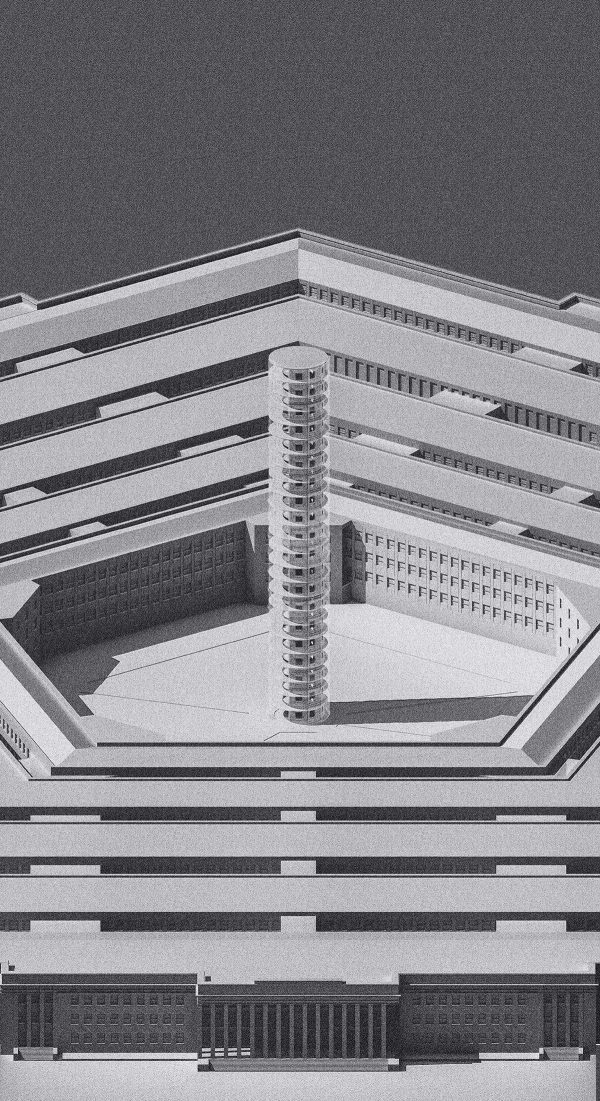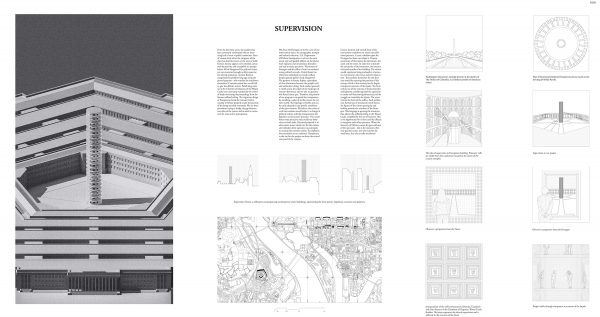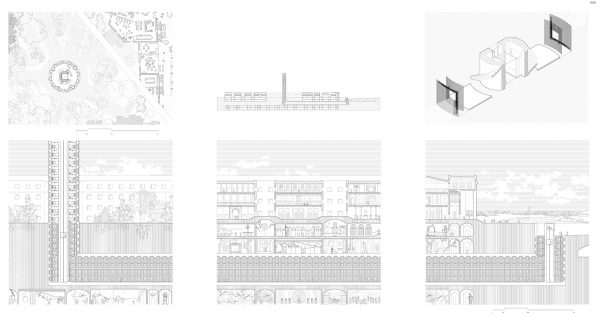Editors’ Choice
2020 Skyscraper Competition
Maciej Worosilak, Dominika Kubicka, Alicja Prusińska, Karolina Kowalczyk
Poland, United Kingdom
Over the last thirty years, the occident has been constantly confronted with an increasing lack of trust in public authorities. Years of a vicious circle when the arrogance of the elites has to lead the masses to the state of indifference. Society appears to be divided, consumed by passivity and susceptible to manipulation; full of disapproval for political classes, yet not concerned enough to fully supervise the elected authorities. Ancient Romans recognized this problem long ago rising the pivotal question – who watches the watchmen themselves? Centuries passed but we still fail to give the definite answer. Polish kings who sat in the Chamber of Deputies of the Wawel Castle were constantly watched by the crowd of heads overseeing the proceedings from the famous coffered ceiling. The ingenious design of Panopticon forced the inmates held in custody to behave properly under the pressure of being watched constantly. We use these precedents trying to bridge the gap between two sides of the system and to send an invitation for more active participation.
We chose the Pentagon to be the site of our intervention due to its iconographic strength and cultural relevance. U.S. Department of Defense headquarters is of one the most iconic and well-guided edifices on the planet. Such vigilance and ostentatious alienation can lead to many questions. The fortress of Pentagon and the office it hosts has endured many political turmoils. The United States has oftentimes embarked on armed conflicts despite the general public’s loud disapproval. The premise of our program is to spread transparency by installing a series of similar towers in the western world. The typology is flexible and can be easily adapted to any specific conditions of the given context. We believe that a series of such interventions would usher in a change in political culture and help transparentize the legislative and executive processes. This could foster more proactive and considerate behavior on both sides.
The presented proposal is an observation tower that rises for the citizens and embodies their aspiration to participate in creating the common reality. To emphasize the connection to our reference, Panopticon, as the site for the project we chose the central courtyard of the campus. Centric location and vertical form of the intervention underlines its visual and subliminal presence. It casts a shadow upon the Pentagon but does not eclipse it. Projects constitute three parts; the lower zone the tunnel, and the tower. In order not to disturb the autonomy of the institution, the entrance is located outside of the building. The visitors would experience being enclosed in a hermetic environment, that serves only for observation. The symbolic dimension for this decision would be exposing the passivity of the society, which is also mirrored in the fragile, transparent structure of the façade. The form evolves out of the contrast of monumentality and lightness, combining both the aspiration to create well-functioning democracy and the struggle to materialize the dream. The tower mimics the form of the coffers. Each perforation formed out of translucent mesh frames the figures of the visitors passing by and looking towards the windows of the Pentagon. This language is quoting the ornament that adorns the coffered ceiling in the Wawel Castle, amplified by the use of material. This is the opportunity for visitors and the officials to recognize the presence of each other. When the Secretary of Defense crosses his gaze with one of the spectators – this is the moment when a new question arises, not who watches the watchmen, but who are the watchmen?

















